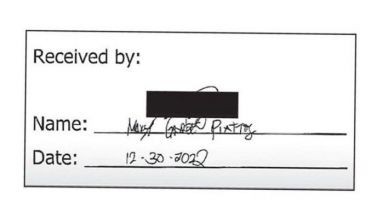Mayon evacuees face food shortage
July 28, 2001 | 12:00am
LEGAZPI CITY — While lava and volcanic mud continued to roll down Mayon volcano, some 30 camps in Albay faced a food shortage yesterday as fleeing families swelled to 10,000, or about 52,000 evacuees.
Social workers told The STAR that the existing food stockpile of the Department of Social Welfare and Deve-lopment (DSWD) would not be enough if more residents are evacuated due to a bigger explosion predicted by volcanologists.
DSWD regional action officer Antonio Joaquin Jr. said food stocks would only last three to five days with the 52,000 people who are already in the evacuation camps.
Joaquin said DSWD food stocks were already strained when authorities evacuated some 46,000 residents after Mayon volcano first erupted on June 23.
Task Force Mayon commander Army Col. Dante Bonifacio said they already doubled the number of Army trucks for the evacuation operations which commenced Thursday morning with 12 trucks.
Albay Gov. Al Francis Bichara convened an emergency meeting yesterday and asked the provincial board to pass a resolution requesting the national government to release the internal revenue allocations (IRAs) of affected cities and towns.
The affected areas are the cities of Legazpi and Tabaco and the towns of Malilipot, Sto. Domingo, Daraga, Camalig and Guinobatan. Most of the evacuees were from Legazpi City and Camalig town.
The influx of frightened residents was so great, officials said, that they could only accommodate evacuees coming from areas directly threatened by Mayon.
Officials also appealed for donations of food and medicine as cramped conditions in the evacuation camps are also expected to affect the health of the evacuees.
Emily Armis, 27, complained that the converted schoolhouses were too noisy and congested, had too few toilets and not enough water.
Another evacuee, Lorna Gaveria, 36, expressed resignation at the repeated evacuations from their homes.
"I am sad because we are not enjoying the comforts of home but we are also happy that the government is taking care of us and giving as foodstuffs," Gaveria said.
Evacuees welcomed the cooling effect of an afternoon shower which relieved them from the ash that continued to spew from the volcano but volcanologists are worried that a lengthy downpour could result in dangerous lahar flows.
In many cases, farmers take their families to evacuation centers but return to their homes and fields at daytime to continue their work.
Arturo Baria, 64, initially fled his farm in Tabaco town after the explosion on Thursday morning but he left his children in the camp and returned to his field with his wife to salvage the family crops and tend to their livestock.
"I am afraid to lose my livestock. I have a water buffalo and a cow. I can’t afford to leave them," Baria said as he harvested his tomato and string bean crop.
Other evacuees returned to check on their huts within the designated danger zone and pick up fresh volcanic rocks that showered area.
"This one’s still hot," Baria said, holding a gray boulder the size of a microwave oven that he planned to sell to gravel crushers. "We earn small money from selling rocks but of course we have to wait for the danger to pass."
"Life here is like this," said Restituto Belga, 71, who has witnessed Mayon’s fury several times in his lifetime. "We run, then we return. We run, then we return."
After erupting on June 23, Mayon Volcano erupted again before 8 a.m. Thursday, followed by two more explosive eruptions at 2:20 p.m. until 3 p.m. and at 5:49 p.m. to 6:10 p.m.
A bulletin from the Philippine Institute of Volcanology and Seismology (Phivolcs) said the highest Alert Level 5 remains in effect but Mayon has entered an "effusive eruptive phase," meaning the volcano has started spewing lava.
Phivolcs said the lava flow has crept to about 3.5 kilometers from Mayon’s summit but was not expected to go beyond the six-kilometer permanent danger zone.
"Phivolcs expects more explosive activity in the following days," the agency said, warning people against entering the danger zone because the area is highly susceptible to life-threatening pyroclastic flows.
Phivolcs also warned residents living near river channels originating from the volcano to be always on the alert and ready to move to higher ground.
The pyroclastic flows swept mainly through the Bonga gully in the southeast and the Basud gully in the east while smaller pyroclastic flows ran through the Miisi and Anoling gullies in the south.
The ash plume of the second and third eruptions was not observed due to rain but Phivolcs estimated the plume to have reached a height of 10 kilometers based on the ashfall in Legazpi City.— With Felix de los Santos, Paolo Romero
Social workers told The STAR that the existing food stockpile of the Department of Social Welfare and Deve-lopment (DSWD) would not be enough if more residents are evacuated due to a bigger explosion predicted by volcanologists.
DSWD regional action officer Antonio Joaquin Jr. said food stocks would only last three to five days with the 52,000 people who are already in the evacuation camps.
Joaquin said DSWD food stocks were already strained when authorities evacuated some 46,000 residents after Mayon volcano first erupted on June 23.
Task Force Mayon commander Army Col. Dante Bonifacio said they already doubled the number of Army trucks for the evacuation operations which commenced Thursday morning with 12 trucks.
Albay Gov. Al Francis Bichara convened an emergency meeting yesterday and asked the provincial board to pass a resolution requesting the national government to release the internal revenue allocations (IRAs) of affected cities and towns.
The affected areas are the cities of Legazpi and Tabaco and the towns of Malilipot, Sto. Domingo, Daraga, Camalig and Guinobatan. Most of the evacuees were from Legazpi City and Camalig town.
The influx of frightened residents was so great, officials said, that they could only accommodate evacuees coming from areas directly threatened by Mayon.
Officials also appealed for donations of food and medicine as cramped conditions in the evacuation camps are also expected to affect the health of the evacuees.
Emily Armis, 27, complained that the converted schoolhouses were too noisy and congested, had too few toilets and not enough water.
Another evacuee, Lorna Gaveria, 36, expressed resignation at the repeated evacuations from their homes.
"I am sad because we are not enjoying the comforts of home but we are also happy that the government is taking care of us and giving as foodstuffs," Gaveria said.
Evacuees welcomed the cooling effect of an afternoon shower which relieved them from the ash that continued to spew from the volcano but volcanologists are worried that a lengthy downpour could result in dangerous lahar flows.
Arturo Baria, 64, initially fled his farm in Tabaco town after the explosion on Thursday morning but he left his children in the camp and returned to his field with his wife to salvage the family crops and tend to their livestock.
"I am afraid to lose my livestock. I have a water buffalo and a cow. I can’t afford to leave them," Baria said as he harvested his tomato and string bean crop.
Other evacuees returned to check on their huts within the designated danger zone and pick up fresh volcanic rocks that showered area.
"This one’s still hot," Baria said, holding a gray boulder the size of a microwave oven that he planned to sell to gravel crushers. "We earn small money from selling rocks but of course we have to wait for the danger to pass."
"Life here is like this," said Restituto Belga, 71, who has witnessed Mayon’s fury several times in his lifetime. "We run, then we return. We run, then we return."
After erupting on June 23, Mayon Volcano erupted again before 8 a.m. Thursday, followed by two more explosive eruptions at 2:20 p.m. until 3 p.m. and at 5:49 p.m. to 6:10 p.m.
A bulletin from the Philippine Institute of Volcanology and Seismology (Phivolcs) said the highest Alert Level 5 remains in effect but Mayon has entered an "effusive eruptive phase," meaning the volcano has started spewing lava.
Phivolcs said the lava flow has crept to about 3.5 kilometers from Mayon’s summit but was not expected to go beyond the six-kilometer permanent danger zone.
"Phivolcs expects more explosive activity in the following days," the agency said, warning people against entering the danger zone because the area is highly susceptible to life-threatening pyroclastic flows.
Phivolcs also warned residents living near river channels originating from the volcano to be always on the alert and ready to move to higher ground.
The pyroclastic flows swept mainly through the Bonga gully in the southeast and the Basud gully in the east while smaller pyroclastic flows ran through the Miisi and Anoling gullies in the south.
The ash plume of the second and third eruptions was not observed due to rain but Phivolcs estimated the plume to have reached a height of 10 kilometers based on the ashfall in Legazpi City.— With Felix de los Santos, Paolo Romero
BrandSpace Articles
<
>
- Latest
- Trending
Trending
Latest
Trending
Latest
Recommended





























